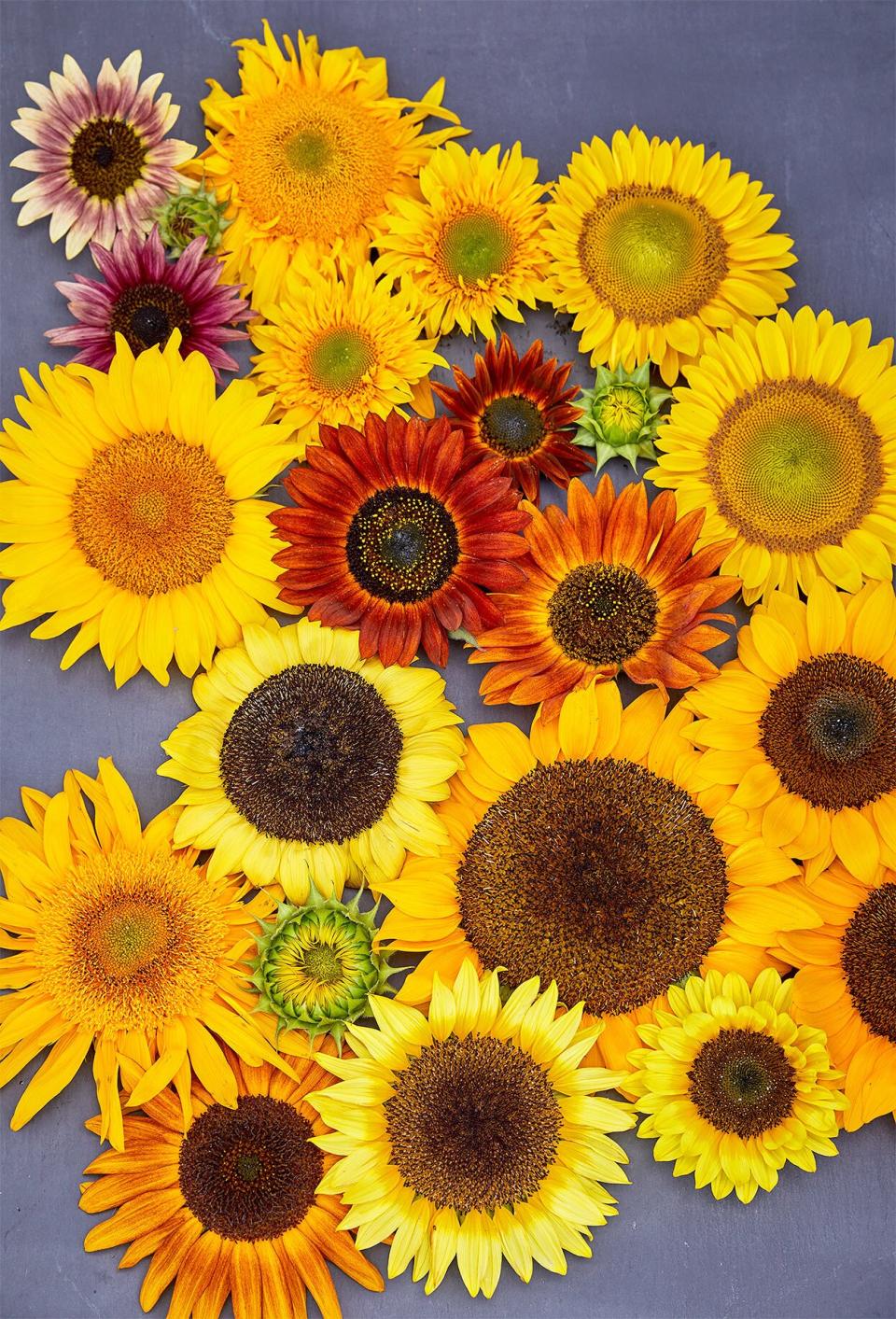Growing Sunflowers to Brighten Your Garden
Sunflowers are easy-to-grow annuals (their scientific name is Helianthus annuus) that are native to much of North America. Their summer-blooming flowers add a cheerful pop of color to the garden or to your flower vase. Some varieties are grown specifically as cut flowers, while others produce delicious edible seeds. Some dwarf varieties grow as short as 16 inches and there are giant varieties that can reach more than 14 feet tall. The world record for tallest sunflower is just over 30 feet! They are available in a range of warm colors, from dark reds to clear yellows to vibrant oranges. With so much variety to choose from, it's easy to find one—or maybe several—to suit your style.

Brie Williams
When to Plant Sunflowers
Plant sunflower seeds outdoors after all danger of frost has passed in spring. If you want to get a jump on the growing season, start the seeds indoors and transplant them after the last frost date for your region.
Soil and Sun
Sunflowers tolerate poor soil but grow best in well-drained, crumbly soil. Choose a planting spot that gets 6 or more hours of sun a day. After the last frost passes, sow seeds 1 inch deep and 6 inches apart in rows at least 24 inches apart. When seedlings are 3 inches tall, thin to 1 plant every 12–18 inches. For continuous flowers, stagger sowings every 2 to 4 weeks.
Water and Fertilizer
Keep the planting area moist until seedlings are 3 to 4 inches tall. If recommended by a soil test, add a slow-release fertilizer when seedlings reach about 12 inches tall. Once established, soak weekly if less than an inch of rain has fallen.

Brie Williams
Supporting Sunflowers
Many varieties are self-supporting, but those that reach 8-plus feet tall or are in windy locations should be staked once they hit 4 feet. Use a bamboo pole that’s about 1 inch in diameter.
Cut Flowers
Snip flowers in the morning after the petals have opened. Cut stems at an angle, strip off the leaves, and place in a vase. Change the water every other day, rinsing and trimming the stems each time.
Harvesting Sunflower Seeds
Many cut-flower varieties are pollenless (meaning they won’t shed pollen) and have small seeds that aren’t great for eating. If you’d like to harvest seeds to eat, try ‘Mammoth’, ‘Super Snack Mix’, or ‘Royal Hybrid’. When the back of the seed head is lemon yellow (about a month after blooming), that indicates the seeds are fully formed in the shell. Cut off the seed head and place it in a dark, dry, ventilated area. Within a few weeks, you will be able to rub off the seeds with your hands.

Brie Williams
Types of Sunflowers
They aren’t all sky-high. Pick one that will fit your garden.
Single Stem
One large flower blooms on a tall stem. Make a statement with a row of them along a wall or garden fence.
Branching
Multiple small flowers grow on branches of varying lengths. Plant anywhere you’d like clusters of flowers.
Dwarf
Less than 3 feet tall, dwarf varieties are just as striking as taller ones. Try the adorable ‘Sunny Smile’ or ‘Teddy Bear’.
Growing Giant Sunflowers
To grow the biggest sunflowers, start with seeds of varieties bred to grow tall with thick, sturdy stalks. Some of the giant sunflower varieties include: ‘Sunzilla’ (12 to 16 feet tall); ‘Heirloom Titan’ (12 to 14 feet); ‘Russian Mammoth’ (9 to 12 feet), ‘American Giant’ (up to 16 feet), ‘Kong’ (12 to 14 feet), and ‘Giganteus’ (12 to 14 feet). A clue to their size is often in their names. Stake tall sunflowers to protect them from wind damage.
Related: 5 Things You Never Knew About Sunflowers
Growing Dwarf Sunflowers
Names are also clues to dwarf sunflowers, which can be grown in the ground or in a container. Plant just one per 8- to 12-inch pot. Some of the smallest sunflower varieties include ‘Junior’ (2-1/2 feet tall), ‘Sunny Smile’ (15 to 20 inches), ‘Teddy Bear’ (2 to 3 feet with fuzzy petals), ‘Sunny Bunch’ (2 to 3 feet), ‘Elf’ (16 inches), and ‘Little Becka’ (3 feet and bicolor).
Perennial Sunflowers
There are many perennial sunflowers. These include Helianthus petiolaris (prairie sunflower), Helianthus grosseserratus (sawtooth sunflower), Helianthus pauciflorus (showy sunflower), and Helianthus maximiliani (Maximilian sunflower).
Grow a Sunflower House for Kids
One fun thing to do with sunflowers is to plant their seeds in a circle or square big enough for a child to enter when the plants are full-grown. Each week, you can measure the height of the sunflowers against the height of your child.
Related: The Top 12 Most Beautiful Sunflower Fields in the U.S.
If you want a roof on your sunflower house, plant scarlet runner beans, morning glories, or another lightweight vining plant with the sunflowers. The vines use the sturdy sunflower stems as a trellis and enclose the space even more.